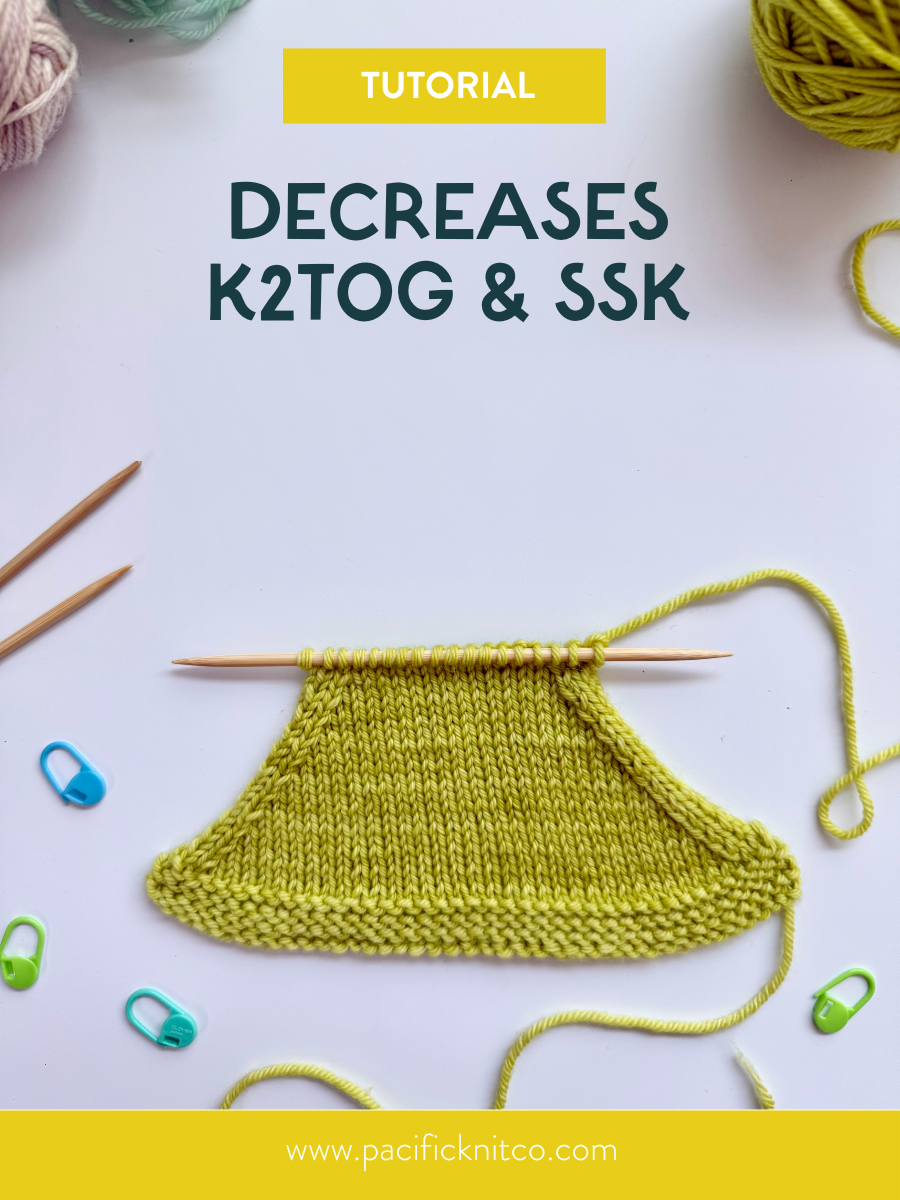How to Swatch Colorwork in the Round
Why Swatch for Colorwork?
When you first start out, stranded colorwork knitting can be tricky to get right due to the nature of carrying more than one yarn at a time, which impacts fabric, thickness, gauge, and tension.
Colorwork knitting also requires more attention to detail when combining different colored yarns. Swatching can help you better understand the contrast and color harmony in your chosen palette.
Any time you are working with a new pattern, motif, or yarn, or if you’ve never worked colorwork before, it’s always a good idea to swatch.


INSTRUCTIONS
MATERIALS
- 2 colors of yarn in the colors/weight you plan to use for your project
- 20g of your main color (background color)
- 10g of your contrast color (motif/image color)
- 8 in [20 cm] circular needles, DPNs or Magic Loop in the size needed for the project
- 1 Stitch Marker
- Scissors
- Tapestry needle
- Gauge tool
- Blocking mat/pins
STEP 1 Cast-on the right number of stitches
Find gauge and Cast-on: Use the gauge listed in your pattern and multiply it by the number of stitches needed for a few inches of fabric.
Example: 6 sts per inch ⇒ 6 sts x 8 in around = 48 sts
For Doodle Patterns I recommend casting-on the following stitch counts based on useful size/shapes in DK:
- 48 sts for a Cup Cozy-sized swatch
- 108-120 for a Headband-sized swatch
Pro Tip: If your project is knit in-the-round, it’s important to swatch in-the-round to mimic the actual project and avoid skewed results from working a flat swatch.

STEP 2 Knit your swatch
Cast-on: Once you have your desired number of sts, cast-on using your preferred needles. Join in the round, being careful not to twist your sts. Place a marker for beginning of round.
Optional - add ribbing*: Work preferred ribbing style for 4-6 rounds. Adding ribbing at the bottom and top of the swatch will reduce the curl that occurs on plain stockinette edges.
*Note: if adding ribbing to a colorwork project, knit one round in your main color between the ribbing and your chart, to keep the motif clear
Work your chosen chart: Choose your colorwork chart and work 1-2 vertical repeats of the pattern, practicing carrying your yarn floats properly to avoid puckering. I recommend working at least 15-20 rounds of colorwork, which usually equates to one Doodle Chart with or without a border chart.
Optional - add ribbing*: Work preferred ribbing style for 4-6 rounds.
Bind off in-pattern: If you worked ribbing, use that pattern for bind off (otherwise simply bind off using stockinette)
STEP 3 Check your floats
Float Management: To avoid puckering or other tension issues, you should spread out the stitches on the right-hand needle as you go, which will ensure your floats aren’t too tight. The float should evenly sit across the stitches it floats behind, both without pulling or being so loose that it will get snagged.
Yarn Dominance: Stranded colorwork relies on yarn dominance, or one color standing proud of the other. I recommend holding the contrast color dominant, so it pops from the background color.

STEP 4 Block and measure your actual gauge
Blocking: After binding off your swatch, wet block or steam it to relax the stitches, pin it flat without overly stretching your fabric, and let it dry completely.
Measuring: Using your gauge tool or a ruler, measure both stitch and row gauge across the colorwork section to ensure accuracy. Note this down along with the yarn and needles used.
STEP 5 Analyze your results
Adjust if necessary: If your gauge is different from the pattern gauge, you may want to re-swatch. Try changing needle sizes or adjusting tension to modify your gauge.
- If you have too many sts per inch, try a larger needle or yarn size.
- If you have too few sts per inch, try a smaller needle or yarn size.
Evaluate color choices: Assess whether the colors work well together. If the pattern is hard to see, or if the colors clash, consider trying a different combination.
Tip for checking contrast: use the black and white filter on your camera to see if the colors have different underlying tones.

Now it's your turn!
Although swatching can sometimes seem like an unnecessary chore, for new colorwork knitters, it should be viewed as an investment in the final project's success. It may take some time, but it’s worth it!
Happy Doodling!
Blog text and photos by Jamie Lomax. Pattern in photos is the 2024 Summer Doodle Mini Set using yarn from the Summer Doodle Mini Kit by Yarnaceous Fibers and Fangirl Fibers. Sample knit by Erin Shursen





